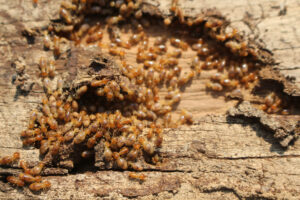
Termites might be small, but the damage they cause can be huge – and costly. If you’ve noticed signs of termites around your home, now’s the time to take action. These wood-loving insects can silently chew through your home’s structure, leading to serious damage that can cost thousands to fix.
Luckily, professional termite removal can protect your property before the situation gets out of hand. In this article, we’ll explore how termite infestations start, what signs to look out for, and most importantly, how expert termite removal services can safeguard your home from further harm. Don’t let these hidden pests turn your home into their next meal – it’s time to fight back!
How can termite removal help prevent structural damage to my home?
Termite removal is crucial in preventing structural damage to your home by eliminating the source of destruction before it causes significant harm. Termites feed on wood, and once they infiltrate your property, they can compromise the integrity of walls, beams, and support structures.
If left untreated, termites can weaken your home’s foundation, leading to costly repairs or even the need for major reconstruction. By removing termites early, you stop them from further damaging critical areas that support the overall stability of your home.
Additionally, professional termite removal eradicates the existing colony and includes preventive treatments to protect your home from future infestations. Experts use targeted solutions that address visible and hidden infestations, ensuring no termite activity is left behind.
Through inspections and long-term monitoring, termite removal services help maintain your home’s structural safety and preserve its value. This proactive approach saves you from the extensive repairs and financial burden of untreated termite damage.
What are the early signs of a termite infestation in a house?
Early signs of a termite infestation can be subtle, but recognizing them can help you address the problem before it causes significant damage. Here are some common indicators:
- Mud Tubes: Termites build pencil-thin mud tubes along walls, foundations, or other surfaces to travel between their colony and food source. These tubes protect termites from drying out and are a clear sign of infestation.
- Discarded Wings: After swarming, reproductive termites (alates) shed their wings, often near windows, doors, or other entry points. Finding piles of discarded wings is a strong indication that termites are present.
- Wood Damage: Termites eat wood from the inside out, so the damage might not be immediately visible. However, tapping on wood that sounds hollow or noticing blistering or peeling wood surfaces could indicate termite activity beneath the surface.
- Termite Droppings (Frass): Drywood termites leave behind tiny, wood-colored droppings called frass. These may appear as small piles near damaged wood or around entry points.
- Swarmers: If you notice flying termites (swarmers) inside or around your home, it’s a clear sign that a colony may be nearby, as swarmers are reproductive termites looking to establish a new colony.
- Bubbling or Uneven Paint: Termites tunneling beneath walls can cause paint to blister or peel, similar to water damage. It may be a sign of termites if you notice unusual paint damage without a moisture source.
If you spot any of these early signs, it’s important to seek professional termite inspection and removal to prevent further damage to your home.
What methods do professionals use to remove termites effectively?
Professionals use various effective methods to remove termites based on the type of termite infestation and the severity of the problem. Here are some of the most common termite removal techniques:
- Liquid Termite Treatments (Termiticides): Termites are killed by liquid termiticides poured into the soil surrounding the home’s foundation. This treatment can keep termites out of the house or remove colonies. Subterranean termiticides last and work.
- Baiting Systems: Residential termite baiting systems use perimeter bait stations. Worker termites bring slow-acting harmful substances from these stations to the colony, where they share this chemical, killing the colony. Baiting is used to prevent or supplement other protection methods.
- Fumigation (Tenting): Fumigation (or tenting) is typical for severe dry wood termite infestations. The home is encased with a tent, and gas kills termites everywhere. Fumigation eliminates widespread termite infestations but keeps residents away for a few days.
- Heat Treatment: Heat treatment involves raising the temperature of the affected area to a level lethal to termites (typically around 120-140°F). This method is non-toxic and highly effective for dry wood termites. It is used to treat localized areas of infestation without the need for chemicals or fumigation.
- Wood Treatment: Wood treatments directly apply termiticides, borates, or other insecticidal agents to the wood. These treatments can be sprayed, injected, or brushed onto the wood to kill termites and protect it from future infestations. This method is often used for smaller, localized infestations or as a preventive measure in new construction.
- Electrocution and Microwave: Some professionals use non-chemical methods like electrocution or microwaves to kill termites in specific, localized areas. These methods involve applying electrical currents or microwave energy to affected wood, causing the termites to die. They are effective for small infestations and are often used with other treatments.
- Foam Termiticides: Foam termiticides fill voids or cracks where termites hide. The foam expands and spreads through hard-to-reach areas, making it ideal for treating wall voids, foundations, or other structural cavities. It kills termites on contact and protects the treated area for some time.
Professionals typically combine these methods to provide a comprehensive treatment plan tailored to the specific type and severity of the infestation. This ensures that the termites are completely eradicated and prevents future infestations.
How much does termite removal typically cost, and is it worth the investment?
The cost of termite removal can vary depending on the infestation’s severity, the property’s size, the type of termites, and the treatment method used. On average, termite removal costs range from $500 to $3,500. Here’s a general breakdown of the factors influencing the cost:
- Type of Treatment:
- Liquid Treatments: Typically cost between $3 to $10 per linear foot, which can range from $500 to $1,500 for an average-sized home.
- Bait Systems: Installation can cost between $1,200 and $3,000, with ongoing monitoring fees of around $200 to $400 annually.
- Fumigation (Tenting): Costs between $1,000 to $3,500, depending on the home’s size and the infestation’s severity.
- Localized Treatments (Heat, Foam, Wood Treatments): These can cost between $500 to $2,500, depending on the size of the area being treated.
- Severity and Size of Infestation: Larger homes or more severe infestations will naturally cost more to treat because more materials and labor are required.
- Type of Termite: Drywood termites are typically more expensive to treat than subterranean termites, especially if fumigation is required.
Is It Worth the Investment?
Yes, termite removal is worth the investment. Termites can cause extensive and costly damage to your home’s structural integrity, leading to repairs that can easily cost tens of thousands of dollars if left untreated. Investing in professional termite removal prevents potential damage, saves on expensive repairs, and protects your home’s value.
Additionally, many professional treatments come with warranties or ongoing monitoring, ensuring long-term protection and peace of mind. In short, the upfront cost of termite removal is far less than untreated termite damage’s financial and structural consequences.
Stop Termites, Protect Your Home Now!
Stop termites and protect your home today with Freedom Pest Services! Our expert team specializes in comprehensive termite removal solutions to eliminate infestations and prevent costly structural damage.
Using advanced techniques and environmentally friendly treatments, we ensure your home stays safe and termite-free. Don’t wait until the damage becomes severe—take action now to protect your biggest investment.
Contact Freedom Pest Services for a thorough inspection and customized treatment plan. Let us safeguard your home with effective termite control and lasting peace of mind. Call us today to schedule your consultation!
